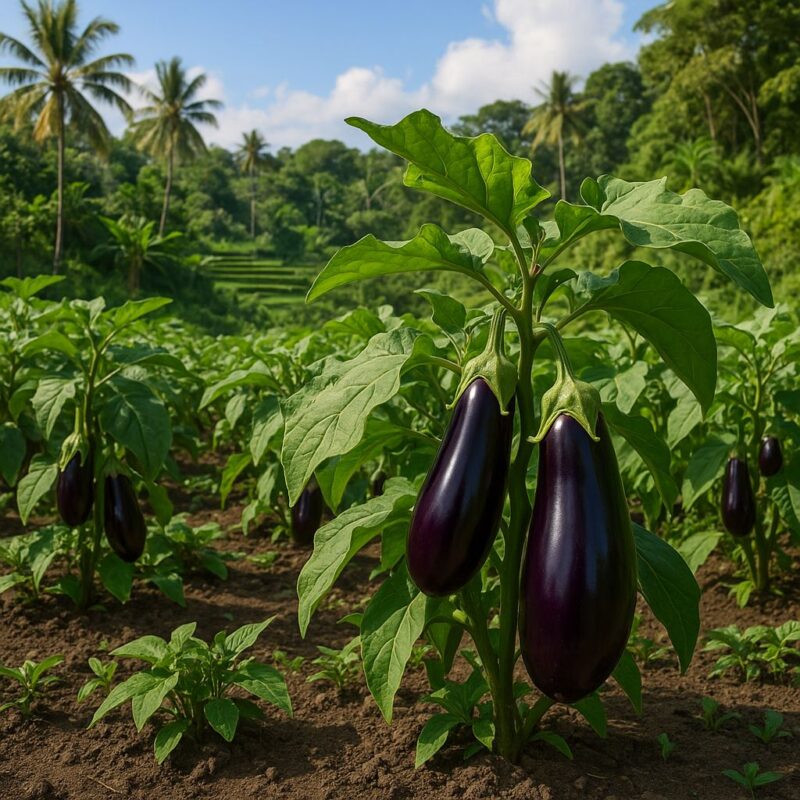Saluyot—jute mallow—is a nutritious leafy vegetable cherished in Ilocano dinengdeng and Mindanao’s tinola variants for its silky texture and subtle, earthy flavor. Thriving in heat and humidity, saluyot offers multiple harvests of tender, glistening leaves just weeks after sowing. From Bulacan’s lowland gardens to Tagaytay’s cooler terraces, here’s how to cultivate saluyot successfully.
Variety Selection
Look for local landraces with vigorous, upright growth and disease resistance. Some upland farmers in Benguet prefer the dark-green, broad-leaf types for their late-season hardiness, while lowland growers in Laguna select the fast-maturing, narrow-leaf strains that regrow quickly after cutting. Planting both diversifies texture and extends your harvest window.
Soil Preparation
Saluyot tolerates a wide range of soils but flourishes in loose, fertile loam. In clay-rich beds—common in Bulacan—I double-dig to 20 cm and blend in two wheelbarrows of homemade compost per ten square meters plus a handful of rice hull charcoal to improve drainage. Coastal sandy plots benefit from added coconut coir or aged chicken manure to retain moisture. Aim for pH 6.5–7.5; if your soil is acidic, a light dressing of dolomite lime a week before sowing helps.
Sowing and Spacing
Saluyot is direct-sown. Sow seeds 1 cm deep in furrows spaced 30 cm apart, dropping seeds every 5 cm. Cover lightly, firm the soil, and water gently. Germination takes 5–7 days at 25–32 °C. In Bulacan’s hottest weeks, I sow under 30 percent shade cloth to prevent seedbed bake-out and remove it once seedlings reach 5 cm.
Watering and Mulching
Consistent moisture fosters tender leaves. Water deeply each morning—wetting soil to 10 cm—then let the surface dry slightly. Mulch lightly with rice straw to conserve moisture, moderate soil temperature, and suppress weeds. In containers or raised beds, water daily during dry spells, checking soil by feel: it should crumble, not ball.
Feeding and Side-Dressing
At sowing, mix a handful of compost into each furrow. Four weeks later, when plants have 6–8 leaves, side-dress with compost tea or decomposed chicken manure around the drip line to supply nitrogen for vigorous regrowth. Saluyot’s rapid cycle generally requires only this single side-dressing.
Sunlight and Shade
While saluyot tolerates full sun, partial shade during the hottest midday hours keeps leaves from wilting and bolting. Interplanting under taller crops—corn, okra, or even adjacent moringa—provides filtered light and reduces irrigation needs.
Pest and Disease Management
Saluyot has few major pests. Aphids on tender tips respond to a gentle neem-oil spray or water flush. Leaf miners leave winding trails; pinch out affected leaves and avoid planting in the same bed consecutively. Root-knot nematodes are uncommon in well-amended beds—rotate with non-root crops to prevent buildup.
Harvesting and Continuous Cropping
Begin harvesting outer leaves as soon as plants reach 15 cm tall—typically 4–5 weeks after sowing. Snip leaves at the base of the stem, leaving the crown intact for regrowth. Frequent picking—every 7 days—promotes a steady supply of tender shoots for up to three months. For continuous cropping, sow new beds every 6–8 weeks.
Case Study
A rooftop cooperative in Metro Manila staggered saluyot sowings under shade nets and achieved six successive harvests from March through August, supplying local eateries with fresh greens when other crops stalled—demonstrating saluyot’s adaptability and market potential.
Final Thoughts
Saluyot’s fast growth, minimal care, and nutritional benefits make it ideal for Filipino gardens—from urban containers to rural fields. By mastering variety choice, soil health, sowing timing, moisture, feeding, and simple pest checks, you can enjoy silky, homegrown saluyot harvests season after season.
I’m open for consulting and speaking opportunities on sustainable leafy-green production and urban agriculture nationwide. Let’s grow together.
#Saluyot #JuteMallow #LeafyGreens #PhilippineFarming #SustainableAgriculture #HomeGarden #ConsultingAvailable #SpeakingOpportunities




